TechRadar Verdict
Gigabyte’s new Aero 15 adds a hexa-core cpu, a 144Hz FHD screen and a faster SD card reader to its winning formula. As a professional ultraportable that games, the Aero 15 is hard to beat.
Pros
- +
big, fast screen
- +
5mm thin bezels
- +
full-sized keyboard
- +
14-inch form factor
Cons
- -
Webcam below screen
- -
Keyboard can feel cramped
Why you can trust TechRadar
There's new Gigabyte Aero 15 models with 20 series Nvidia GPUs available now, but the Aero 15 2018 is still available for anyone not convinced by the benefits of RTX graphics.
Gigabyte’s Aero range has always attempted to bring premium gaming components to the Ultrabook form factor, and this 2018 Aero 15 is no different. Bringing together a 15.6-inch Pantone color certified screen, full-sized keyboard with number pad, dedicated Nvidia GPU and a generous 94Wh Li-Ion battery and squeezing it all into a tiny 14 x 9.8 x 0.7-inch (35.6 x 25 x 1.9 cm) form factor is an impressive feat of engineering. Combine this with one of Intel’s new high-end 8th-generation mobile CPUs, 16GB o f DDR4 RAM and a 512GB SSD and you have a cutting edge gaming PC that slyly takes the shape of a professional Ultrabook – and when it comes to performance, this machine is far more than just hot Aero.
Pushing the envelope this far has invariably lead to some design choices that will be divisive – like dropping the web camera to the bottom of the screen, and giving the keyboard a fractionally off-center and crowded feel. On the whole though, these compromises seem to have been carefully considered and ultimately end up as minor grievances rather than major caveats.

Price and Availability
Here is the Gigabyte Aero 15 configuration sent to TechRadar for review:
CPU: 2.2GHz Intel Core i7-8750H (hecta-core, up to 4.1GHz)
Graphics: Nvidia GeForce GXT 1060 (6GB GDDR5 RAM)
RAM: 16GB DDR4 (2,666MHz)
Screen: 15.6-inch FHD (1920 x 1080) 144Hz LED display (Pantone calibrated), OR 15.6-inch UHD (3840 x 2160) G-Sync Adobe RGB 100%
Storage: 512GB Crucial SATA 3 SSD or 512GB PCIe NVMe Gen 3x4 SSD
Ports: 1 x USB-C (Thunderbolt 3), 2 x USB 3.1 (Gen 1), USB 3.1 (Gen 2), HDMI 2.0, Mini DisplayPort 1.4, UHS-II 500MB/s SD card reader, Ethernet port, 3.5mm combo audio/mic jack
Connectivity: 802.11ac Wi-Fi, Bluetooth 4.2
Operating system: Windows 10 or Pro 64-Bit
Camera: HD (1080p) webcam
Weight: 4.4 pounds (2kg)
Size: 14 x 9.8 x 0.7 inches (35.6 x 25 x 1.8 cm W x D x H)
While it might look like a lightweight Ultrabook that’s intended for lighter workloads, the Aero 15 actually packs a number of powerful components into its small chassis that mean it can tackle more than most 14-inchers. Squeezing these expensive parts into such a small form factor adds additional spatial and thermal engineering costs to an already expensive spec sheet.
While this combination can often lead to a lofty price point at retail, fortunately the Aero manages to keep it’s price reasonable, with options starting at $1,999 (£1,999, AU$2,899). That price will get you the Nvidia GeForce GTX 1060 GPU configuration, but you can optionally step up to a significantly more efficient GTX 1070 Max-Q GPU for only a few hundred dollars extra at $2,299 (£2,199, AU$3299). Then, you’ve also got the option to give the screen a 4K facelift and reinstate the NVMe SSD for a total of $2,399 (£2,199 AU$3699).
These new 8th-gen devices will be available from stores and online retailers on the 16th of April. Some retailers will reportedly be offering pre-orders before then.
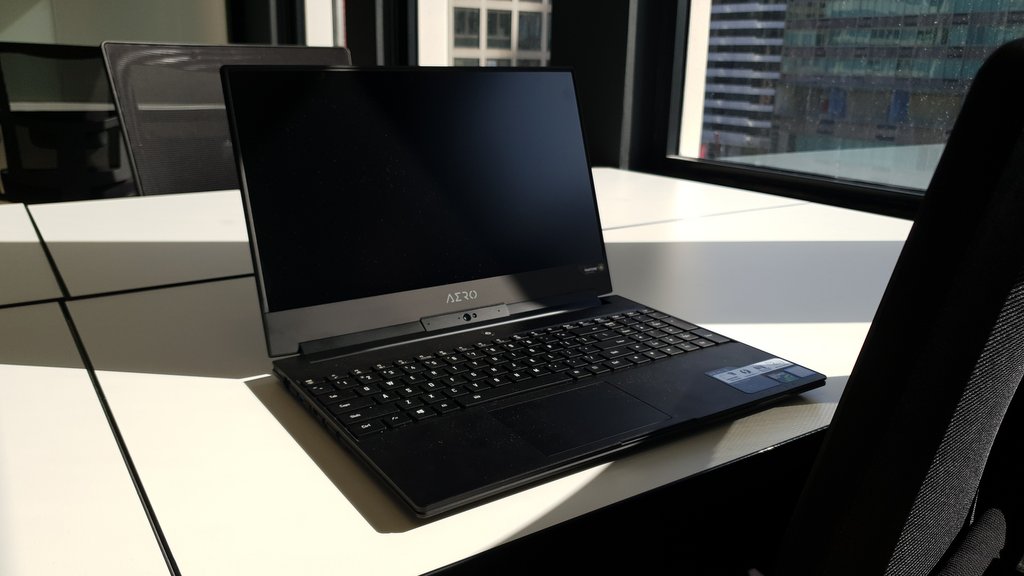

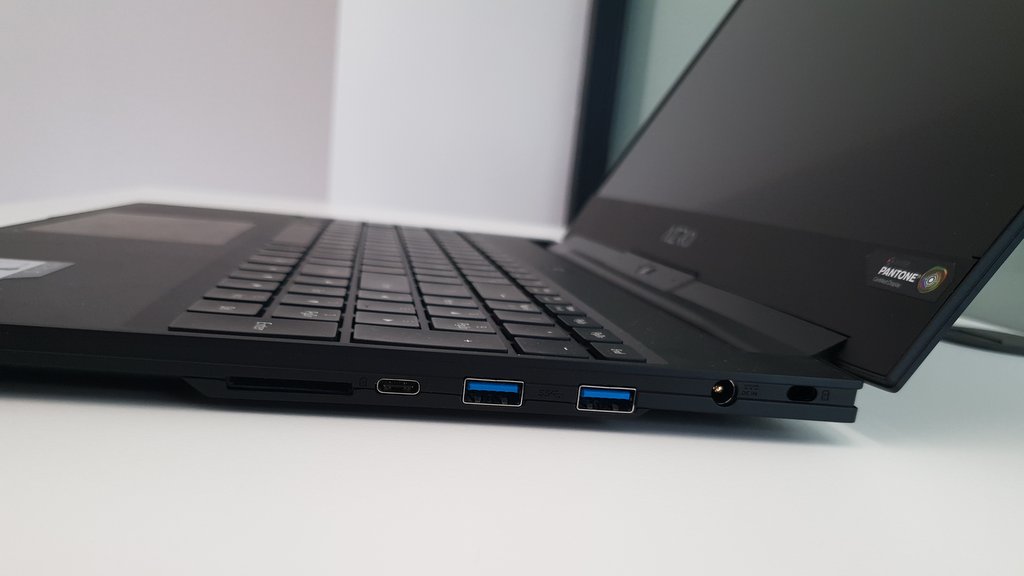
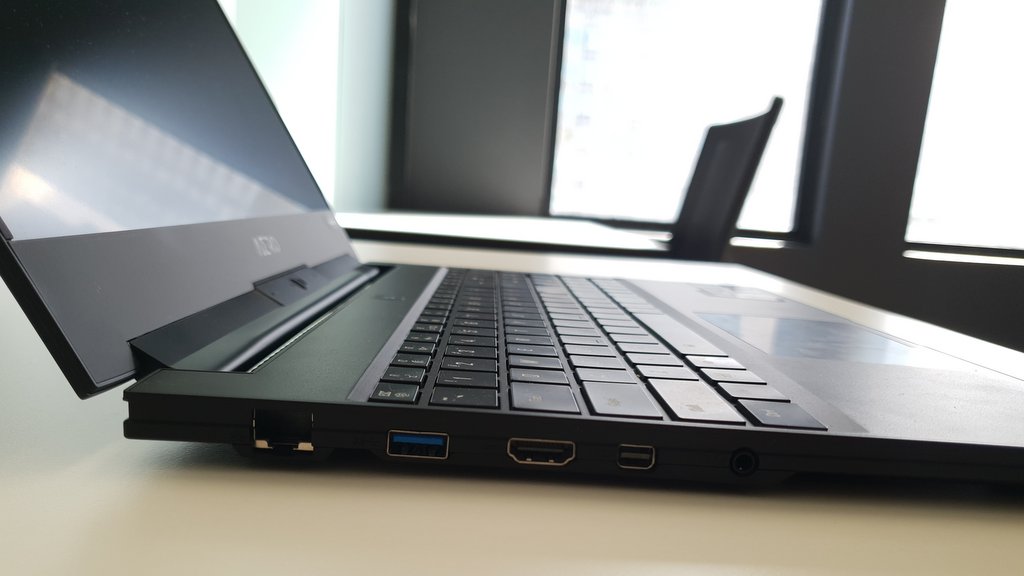
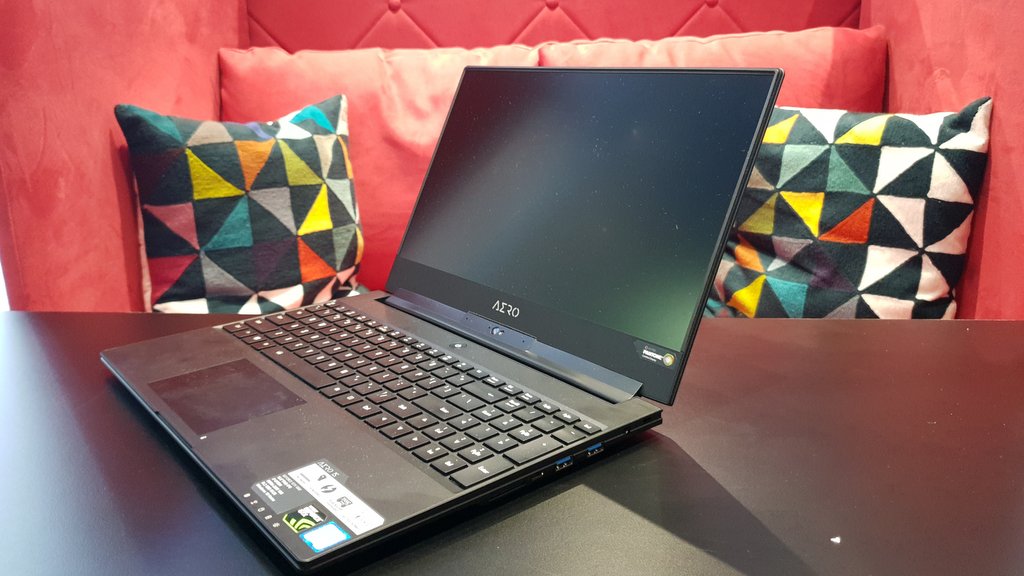
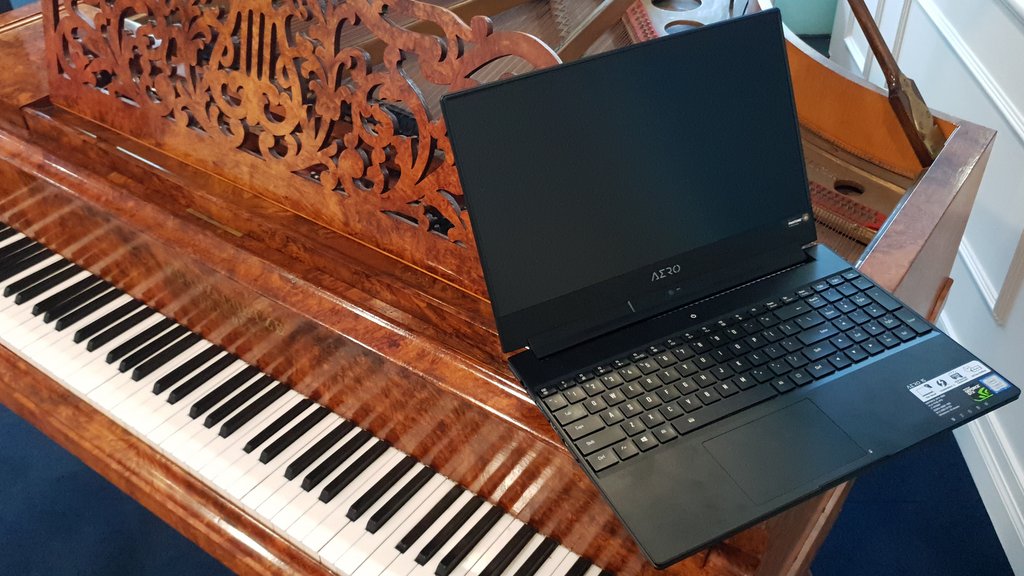
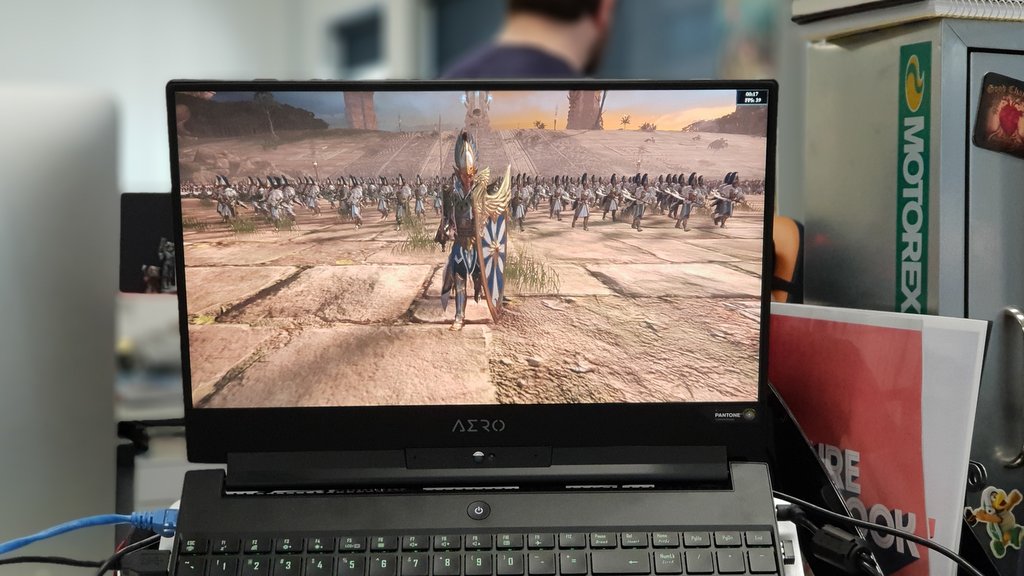
Design
The design aesthetic of the Aero 15 is largely governed by the fact that its 15.6-inch screen has been packed into a 14-inch laptop body. While that’ll make it appealing to anyone for a small and portable laptop, it does create some hurdles that you’ll have to be willing to overlook. Take the display for example: on the one hand, it’s amazing that you can have a screen almost without borders, but those 5mm bezels force the rest of the computer to have comparatively sharper and squarer corners than the friendlier, rounder corners that are generally in vogue these days.
The reduced bezel size also means there's no space for the webcam at the top of the screen, forcing it to drop to bottom near the the hinge, something that isn’t ideal in terms of function (we’ll discuss this more later), but also makes the bottom bezel bulkier than it arguably needs to be, and which throws off the balance of the screen design overall. It’s good to see a gaming laptop range experimenting with screen layout and there will be plenty willing to sacrifice an unused webcam for thinner bezels and a smaller overall footprint, but it’s an element that will undoubtedly turn some users away as well.

While we’re pleased that the Aero 15’s keyboard includes a number pad – it’s a feature that’s critical for certain professionals – it does suffer from some of the same space constraints as the screen, with the keys filling the frame and sitting just a hairline away from the body edge. Obviously, with that limited space there’s no gap between the keyboard proper and the number pad and the two have been melded together in a way that abbreviates the right Shift key, and gives you little room for error on the Backspace and Enter keys. It’s not a big enough grievance to be a deal breaker, you’ll adapt to the altered layout soon enough, but is is something that’ll likely irk initially.
It’s worth looking at the Aero 15 design from a broader perspective, however, as there aren’t any other laptop vendors that’ll give you a gaming-grade machine with a 15-inch screen and a full number pad in a 0.7 inch (1.8cm) thick chassis – something that allows it to fit into many 13-inch laptop backpacks or shoulder bags.
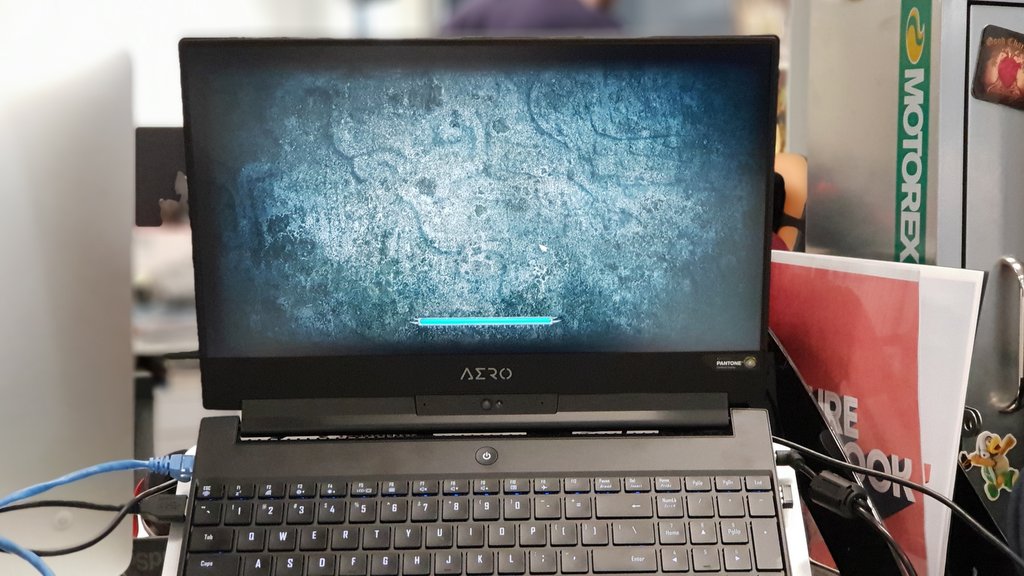
And while the unit is on the heavy side at a little over 4.4 pounds (2kg), for something with this much power and battery life, it’s actually exceptionally lightweight. It doesn’t skimp on materials either, reintroducing the carbon fibre envelope-shaped embellishment to the top of the Aero 15’s premium metallic shell. That appeal flows into the silky smooth trackpad that’s one of the most responsive we’ve tested in recent memory. Moreover, although the keyboard is a little constrained on the right hand side, it is otherwise comprised of pleasant feeling keys with powdery matte keycaps and deep travel distances for a painless typing experience.
Turning to the internal design, the Aero 15 uses an integrated dual fan cooling system with two heat pipes thermally servicing both the CPU and GPU to distribute heat effectively when one is hotter than the other. The inlet fan grills have been placed on the undercarriage, allowing the unit to save precious edge space for additional ports. The output vents are hidden under the hinge and throw heat up onto and behind the screen of the device, which seems to keep the underside cool enough to use on your lap if you wanted to – something that’s not always the case in gaming-capable laptops. This thermal design is effective at keeping both the CPU and GPU under 91ºC and 83ºC (196ºF and 182ºF) respectively, even when pushed hard in gaming and CPU heavy benchmarks.
- 1
- 2
Current page: Intro, Price, Availability and Design
Next Page Screen, Performance and Conclusion
Joel Burgess is one of the Senior Writers on the TechRadar Australia team with over 9 years experience testing and reviewing laptops, gadgets and kitchen accessories from coffee machines to pizza ovens. Joel is the Australian PC Awards expert panellist for systems and laptops and is a permanent columnist and reviewer for Australia's leading PC magazine APC.
